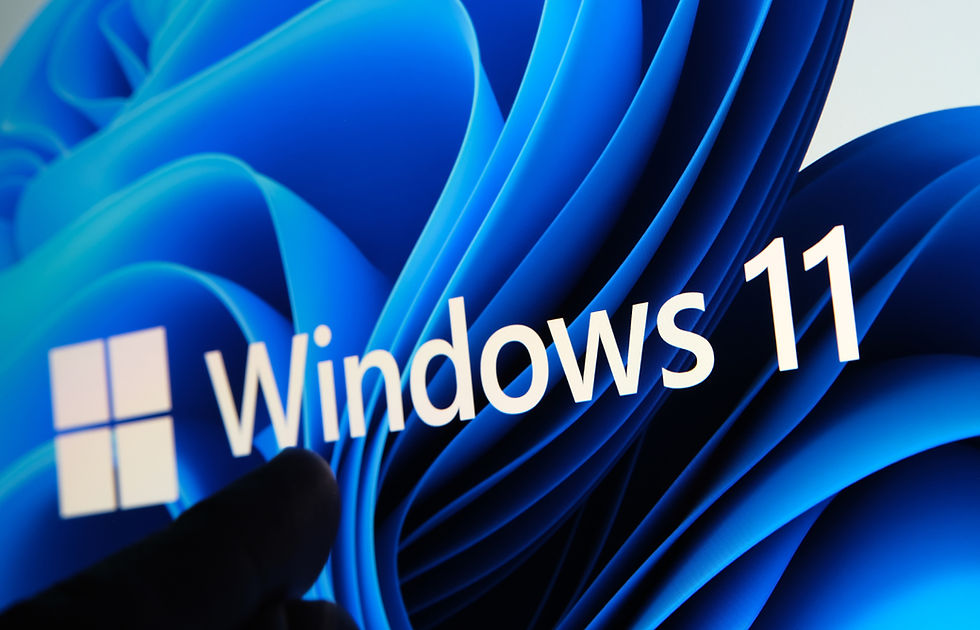Final Countdown: Windows 10 Support Ends October 14—Is Your Business Ready?
- Brayden Cantzler
- Sep 8
- 3 min read
Updated: Nov 20

After nearly a decade, Windows 10 will reach end-of-support on October 14, 2025. That means no more security updates, bug fixes, or Microsoft support—unless you pay for Extended Security Updates (ESUs), and even those are temporary.
If your business is still running on Windows 10 PCs, this is the moment to act. You have about 30 days left to make a plan that avoids unnecessary risk and unplanned downtime.
At TEC Services Consulting, Inc., we’ve helped dozens of small and mid-sized businesses prepare for this shift. Here’s what we’re recommending to clients right now.
What Happens After October 14?
Let’s be clear: Windows 10 won’t suddenly stop working on October 15. But it will become unsupported and vulnerable—and that has real consequences:
No more monthly security patches
Software compatibility issues (especially with Microsoft 365 and business apps)
Higher risk of malware, ransomware, and data breach
Compliance violations for businesses in regulated industries
No support from Microsoft (or your MSP) if something goes wrong
TEC Tip: If your cyber insurance policy requires supported systems (most do), running Windows 10 after October could jeopardize your coverage.
What Are Your Options?
There are three main paths forward:
1. Upgrade to Windows 11 on existing hardware
If your devices meet Windows 11 hardware requirements—TPM 2.0, Secure Boot, compatible CPU—upgrading may be viable.
Check compatibility: https://www.microsoft.com/en-us/windows/windows-11-specifications
Make sure firmware (BIOS/UEFI) is updated
Back up your data before starting
Plan for downtime—upgrades can take 1–2 hours per device
2. Replace devices with Windows 11-ready hardware
If your machines are more than 3–4 years old or not compatible, replacement is usually the better move.
Modern laptops and desktops come with Windows 11 Pro preinstalled
Newer devices are more secure, faster, and easier to manage
TEC recommends standardizing on business-class machines with at least:
Intel vPro or AMD PRO
16 GB RAM
NVMe SSD (512 GB or more)
Windows 11 Pro
TEC Tip: Replacing in phases? Start with the most critical users—finance, operations, external-facing staff—and work backward.
3. Buy time with Extended Security Updates (ESU)
Microsoft offers ESUs for Windows 10—but it’s not cheap, and it’s not forever.
Paid annually through October 2028
Pricing increases each year
Available via Microsoft 365 admin center or volume licensing
TEC Tip: ESU should be a bridge, not a strategy. Use it to buy time only if absolutely necessary (e.g., custom software or critical hardware dependency).
What Should You Be Doing This Month?
✅ Inventory all Windows 10 devices—identify what can be upgraded vs. replaced
✅ Make a device plan—new hardware orders, phased refresh, or ESU enrollment
✅ Prioritize user groups—focus on those handling sensitive data or customer-facing systems
✅ Schedule upgrade time—and communicate it to your team
✅ Review cybersecurity policies—make sure unsupported devices are not in scope for daily operations
TEC Tip: Don’t wait for Patch Tuesday to reveal vulnerabilities. Unsupported systems attract attackers—and recovery is always more expensive than prevention.
How TEC Can Help
We offer:
Procurement support for modern Windows 11 Pro business machines
Deployment via Windows Autopilot, including remote setup
Ongoing device management and security post-migration
ESU enrollment guidance if short-term extensions are necessary
Final Thought: Don’t Let Time Run Out
There’s no benefit to waiting at this point. Every day you delay increases your risk—and reduces your options.
📩 Ready to finalize your Windows 11 plan? Email info@tecsinc.com or call 630-305-7486 to speak with a consultant.
We’ll help you upgrade the right way—before the clock runs out.




